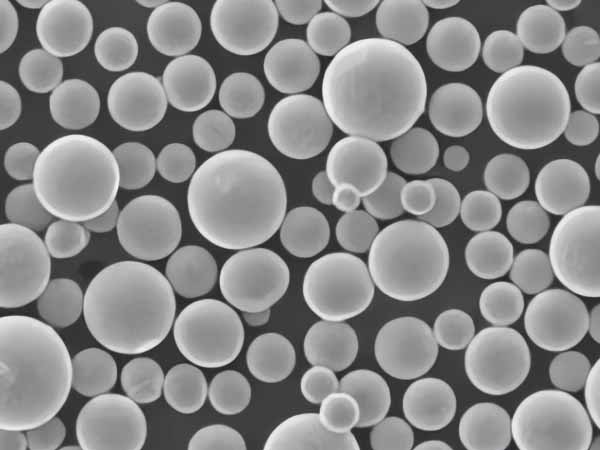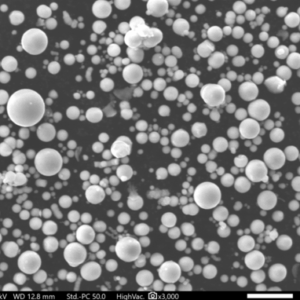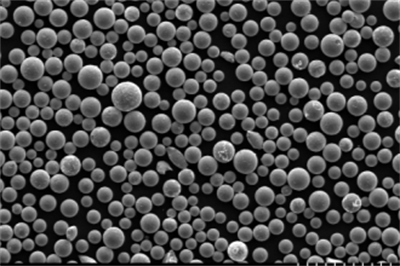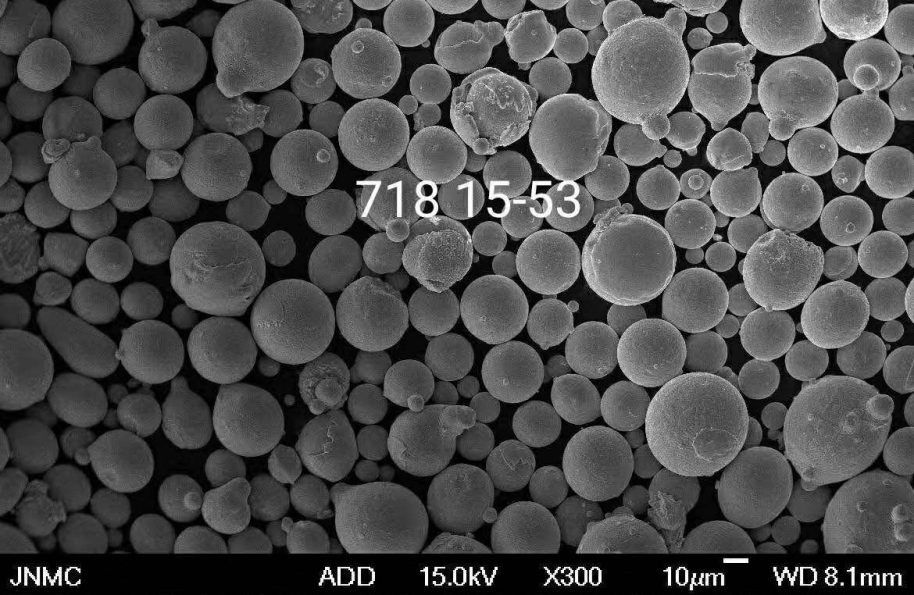When it comes to advanced materials in modern engineering, CuAlNi powders, which are a unique blend of copper, aluminum, and nickel, are a cornerstone in many applications, from aerospace components to automotive parts. But what makes CuAlNi powder so special? Why is it used in various high-tech industries? In this guide, we’ll deep dive into CuAlNi powder, exploring everything from its composition to its advantages and applications.
Overview of CuAlNi Powder
CuAlNi powder refers to a type of shape memory alloy (SMA) powder made up of copper (Cu), aluminum (Al), and nickel (Ni). SMAs are metals that have the ability to “remember” their original shapes when subjected to heat or other external forces. This material is notable for its wide-ranging applications, including in industries that require precise mechanical movements, like robotics and medical devices.
What’s fascinating about CuAlNi alloys is their unique combination of thermal, mechanical, and chemical properties. These powders offer a balance of strength, flexibility, corrosion resistance, and shape memory effect, making them ideal for products that need to withstand extreme conditions or environments.

Composition of CuAlNi Powder
The composition of CuAlNi powder typically consists of:
| Element | Percentage (%) | Purpose |
|---|---|---|
| Copper (Cu) | 70% – 90% | Provides electrical conductivity and corrosion resistance |
| Aluminum (Al) | 8% – 15% | Enhances strength, lowers density, improves oxidation resistance |
| Nickel (Ni) | 3% – 10% | Improves hardness, enhances mechanical properties, and contributes to the shape memory effect |
Key Properties of CuAlNi Powder
CuAlNi powders stand out because of their shape memory properties, but they also exhibit several other important characteristics. Here’s a breakdown of the most critical features:
| Property | Description |
|---|---|
| Shape Memory Effect | Returns to its original shape after deformation when heated |
| Corrosion Resistance | Excellent resistance to corrosion, especially in marine environments |
| High Strength | Retains mechanical strength under high temperatures and stress |
| Thermal Stability | Maintains stable properties under extreme temperature conditions |
| Ductility | High formability allows for easy manufacturing processes |
| Fatigue Resistance | Withstands repeated mechanical stress without failure |
| Electrical Conductivity | Relatively high conductivity for electrical applications |
These properties make CuAlNi powder a top choice for demanding applications like heat exchangers, actuators, sensors, and even in aerospace engineering where performance is critical.
Types and Models of CuAlNi Powders
CuAlNi powders come in various formulations and grades depending on the exact application. Each model offers slightly different properties based on the percentages of copper, aluminum, and nickel. Below are 10 commonly used CuAlNi powder models, each tailored for specific uses:
| Model | Composition | Primary Use |
|---|---|---|
| CuAlNi-7030 | 70% Cu, 20% Al, 10% Ni | Precision sensors, actuators |
| CuAlNi-8515 | 85% Cu, 10% Al, 5% Ni | Aerospace components, high-temperature parts |
| CuAlNi-8020 | 80% Cu, 15% Al, 5% Ni | Shape memory devices, robotic actuators |
| CuAlNi-7545 | 75% Cu, 15% Al, 10% Ni | Electrical contacts, connectors |
| CuAlNi-7525 | 75% Cu, 10% Al, 15% Ni | Medical devices, implants |
| CuAlNi-9040 | 90% Cu, 7% Al, 3% Ni | Structural components, marine applications |
| CuAlNi-8812 | 88% Cu, 8% Al, 4% Ni | Energy-efficient actuators, automotive parts |
| CuAlNi-8510 | 85% Cu, 10% Al, 5% Ni | Heat exchangers, piping systems |
| CuAlNi-8218 | 82% Cu, 12% Al, 6% Ni | High-strength wires, corrosion-resistant parts |
| CuAlNi-7614 | 76% Cu, 14% Al, 10% Ni | Springs, clips, and fastening components |
Applications of CuAlNi Powder
CuAlNi powders are incredibly versatile and can be found in a wide range of industries. Here are some of the key applications:
| Application | Industry | Why CuAlNi Powder Is Used |
|---|---|---|
| Aerospace Components | Aerospace | High strength, temperature resistance, and fatigue resistance make it ideal for aircraft components. |
| Heat Exchangers | HVAC | Excellent thermal and corrosion resistance properties make CuAlNi suitable for heat transfer applications. |
| Shape Memory Actuators | Robotics, Medical Devices | CuAlNi alloys’ shape memory effect is perfect for actuators that require precise control. |
| Sensors | Automotive, Industrial | The ability to retain shape under thermal stress enhances sensor durability and performance. |
| Electrical Contacts | Electronics | High electrical conductivity and resistance to oxidation make it ideal for electrical applications. |
| Marine Engineering | Marine | Corrosion resistance, particularly in saltwater environments, ensures longevity in marine applications. |
Advantages of CuAlNi Powder
So why choose CuAlNi powder over other materials? The advantages are numerous:
- High Corrosion Resistance: Unlike some other alloys, CuAlNi powders resist corrosion even in harsh environments, such as marine and chemical settings.
- Shape Memory Properties: The shape memory effect is critical in applications requiring high precision, like actuators and sensors. When exposed to heat, CuAlNi alloys can revert to their original form.
- Durability: CuAlNi powder can withstand mechanical stresses and repeated thermal cycles without degradation, making it reliable in long-term applications.
- Thermal Stability: These alloys remain stable at high temperatures, which is essential in aerospace and other high-heat applications.
- Versatile Manufacturing: CuAlNi powders can be used in various manufacturing processes, including powder metallurgy, 3D printing, and traditional casting.
Comparing CuAlNi Powder with Other Materials
If you’re wondering how CuAlNi powder stacks up against other common alloys, let’s break it down:
| Material | Pros | Cons |
|---|---|---|
| CuAlNi Powder | Shape memory effect, corrosion-resistant, high strength, excellent durability | Higher cost compared to standard alloys |
| Stainless Steel | Excellent corrosion resistance, affordable | No shape memory properties, lower thermal stability |
| Titanium Alloys | Lightweight, corrosion-resistant | Expensive, lower electrical conductivity |
| Aluminum Alloys | Lightweight, good conductivity | Lower strength, no shape memory effect |
| Bronze | Good electrical conductivity, affordable | Limited thermal resistance, no shape memory properties |
Specifications, Sizes, and Grades of CuAlNi Powder
CuAlNi powders come in various specifications depending on the application:
| Specification | Range | Details |
|---|---|---|
| Particle Size | 10 μm – 150 μm | Available in various grain sizes for different applications. |
| Purity | 99.5% – 99.9% | High-purity powders ensure reliable performance. |
| Shape | Spherical, Irregular | Spherical powders offer better flow properties for additive manufacturing. |
| Density | 7.0 – 8.9 g/cm³ | Depends on the exact composition and grade. |
| Standards | ASTM B505, AMS 4777 | Complies with industry-specific standards. |
Suppliers and Pricing Details for CuAlNi Powder
| Supplier | Price (per kg) | Location | Delivery Time |
|---|---|---|---|
| Global Metal Powders | $250 – $350 | USA | 2 – 4 weeks |
| Advanced Engineering Materials | $280 – $370 | Germany | 1 – 3 weeks |
| American Elements | $300 – $400 | USA | 3 – 5 weeks |
| Goodfellow | $290 – $360 | UK | 2 – 4 weeks |
| NanoAmor | $270 – $330 | China | 1 – 2 weeks |
Pros and Cons of Using CuAlNi Powder
To make an informed decision, let’s consider the pros and cons of CuAlNi powders:
| Advantages | Disadvantages |
|---|---|
| Excellent corrosion resistance | Higher cost compared to some alternatives |
| Shape memory effect | Can be harder to machine in some cases |
| High mechanical strength | Limited availability in certain regions |
| Superior thermal stability | May require specialized manufacturing processes |
| Versatile manufacturing capabilities | Not ideal for lightweight applications |

FAQs
| Question | Answer |
|---|---|
| What is the main application of CuAlNi powder? | It’s widely used in shape memory actuators, sensors, and aerospace components. |
| How does CuAlNi powder exhibit the shape memory effect? | The alloy “remembers” its shape when subjected to heat and can revert to its original form after deformation. |
| Is CuAlNi powder corrosion-resistant? | Yes, it has excellent resistance, particularly in marine and chemically harsh environments. |
| Can CuAlNi powder be used in 3D printing? | Absolutely. The spherical forms of CuAlNi powder are particularly suitable for additive manufacturing. |
| How is CuAlNi powder different from titanium alloys? | CuAlNi powder offers shape memory properties, while titanium is more lightweight but lacks this unique effect. |
| What is the price range for CuAlNi powder? | Depending on the supplier, prices range from $250 to $400 per kilogram. |
Conclusion
CuAlNi powder is a truly remarkable material, offering a combination of high strength, corrosion resistance, thermal stability, and, most importantly, shape memory properties. This unique powder finds applications across industries like aerospace, robotics, medical devices, and more. With various grades and models available, it is adaptable to meet specific performance requirements, making it an essential material in the modern engineering landscape. Whether you are working on precision sensors or high-temperature components, CuAlNi powder can deliver the reliability and performance you need.













